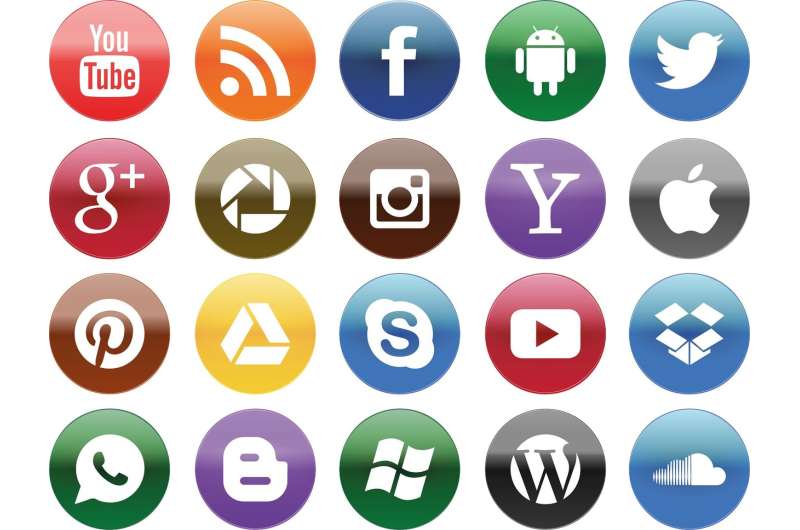Secure type: Consumers say compact logos signal product safety

Compact logos can encourage favorable brand evaluations by signaling product safety, according to a new study by researchers at Boston College's Carroll School of Management and Indian Institute of Management Udaipur, who reviewed the opinions of 17,000 consumers and conducted additional experiments with a variety of logos.
The findings reveal that typography—specifically tracking, or the spacing between letters in a word—can influence consumers' interpretations of brand logos. Further, the interpretation is influenced by cultural factors, the researchers reported in a recent edition of the Journal of Consumer Research.
In addition to the survey data, the results were confirmed in experiments, even during the COVID-19 pandemic, when public health guidance on social or physical distancing put a new emphasis on space, Hagtvedt said.
"We found fairly consistent patterns in these responses, even during the pandemic, when some brands were experimenting with placing the letters of logos farther apart to emulate a social distancing signal," said Boston College Associate Professor of Marketing Henrik Hagtvedt, who co-authored the paper with IIM's Tanvi Gupta.
The researchers analyzed data from 17,000 consumers rating 629 brands. Hagtvedt and Gupta found compact logos, where tight tracking leaves less space, encouraged favorable brand attitudes when compared to loose logos, where loose tracking creates a more spacious appearance. According to consumers, compact logos signaled that the brand was reliable, secure, and trustworthy.
Logos are central to the ways brands communicate with consumers. Logos that appear physically robust imply a brand's products are safe to use, Hagtvedt said. Compact logos were shown to send a message to consumers implying their products were sturdy and secure. This is particularly the case with textual logos, where consumers show sensitivity to the spacing between letters. Tight lettering equates to sturdiness in the minds of most consumers, whereas too much space may imply vulnerability, Hagtvedt said.
Cultural influences are also at play, according to the new report, titled "Safe Together, Vulnerable Apart: How Interstitial Space in Text Logos Impacts Brand Attitudes in Tight versus Loose Cultures." Drawing on the work of anthropologists, the researchers focused on two groups of consumers: those considered culturally "tight" or "loose." Tight cultures are a function of adapting to threats, such as violence or natural disasters. Individuals from this group are likely to favor the appearance of tight structure.
In the US, studies have shown southern states tend to display cultural tightness, while states in the west and northeast reveal looser structure. Factors such as religion, organization, or industry, can influence cultural tightness.
Gupta and Hagtvedt report that consumers tended to favor compact logos over spacious ones, regardless of cultural tightness, under ordinary circumstances. However, when the experiments involved contexts with potential safety concerns (such as products related to pharmaceuticals or mobile financial services), only culturally tight consumers responded more favorably to the compact logos.
The researchers suspect that the latter findings stem from culturally loose individuals associating space with freedom or autonomy, and being especially sensitive to that signal when safety is threatened. Among these individuals, the restrictive associations of compact logos can balance out the positive security signal.
The findings add to the understanding of how people draw meaning from visual communications, a key insight for brand managers and businesses of all sizes, said Hagtvedt. At the same time, they provide practical tips to organizations and individuals seeking to signal safety, depending on the context as well as the relevant culture.
Developing better quantitative standards can help organizations better assess how their designs may be perceived, rather than going on "gut" intuition about what makes a successful logo.
"It is important to know what kind of signal a logo sends," said Hagtvedt. "Businesses spend millions on not just designing their logos, but on using their logos in brand communications. It is arguably the most prominent representation of a brand, wherever that brand operates. It has an enormous influence on consumers. To design and deploy a logo haphazardly is a questionable practice."
More information: Tanvi Gupta et al, Safe Together, Vulnerable Apart: How Interstitial Space in Text Logos Impacts Brand Attitudes in Tight versus Loose Cultures, Journal of Consumer Research (2021). DOI: 10.1093/jcr/ucab006
Journal information: Journal of Consumer Research
Provided by Boston College


















